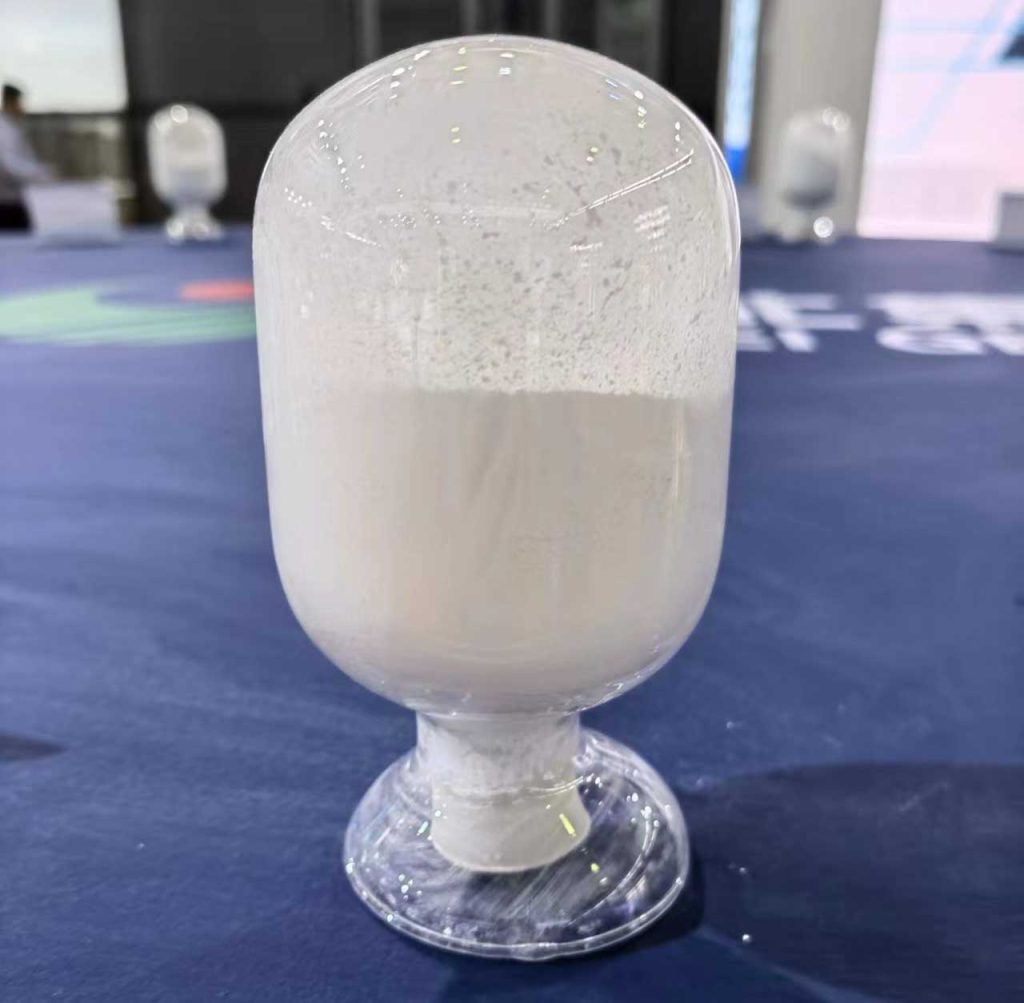Šuplje staklene mikrosfere
Uvod
Ranging from 10 do 300 micrometers in diameter, they might also be called microballoons or glass bubbles. These microspheres possess hollow structures that grant them exceptional low thermal conductivity characteristics. Their applications span a variety of elastomeric uses, including shoe soles, tires, hoses, wires, and cables. Due to their hollow nature, these glass bubbles contribute to creating robust foam systems featuring closed cells.
Slijedom toga, Šuplje staklene mikrosfere exhibit minimal porosity and form a protective integral skin, offering resistance to moisture and exhibiting low gas permeability across a broad range of temperatures. Composite materials formed by bonding these hollow glass microspheres together hold great promise for construction projects requiring materials that combine.
Šuplje staklene mikrosfere
Povijest
The history of hollow glass microspheres traces back to their development as a natural progression from glass beads, a breakthrough that emerged in the 1950s. These early glass beads formed the foundation upon which hollow glass microspheres suppliers would later built.
Fast-forwarding to the 1960s, this innovative technology found its niche as fillers within the rapidly expanding plastics industry. During this period, microspheres began to gain traction as valuable additives to plastics. They provided the plastics sector with new possibilities for enhancing material properties and performance, opening up avenues for lightweighting, improved mechanical attributes, and enhanced thermal insulation capabilities.
The integration of hollow glass microspheres into the plastics industry marked a significant step forward in material science and engineering. The 1960s served as a pivotal era, when the potential of these microspheres to enhance various materials began to be fully realized. This marked the beginning of their journey from experimental entities to practical, high-demand additives that would go on to impact multiple industries in the years to come.
Filler Characterization
Hollow glass microspheres suppliers blend constituents, prominently including silica, boron trioxide, sodium oxide, and calcium oxide. This intricate amalgamation of elements contributes to the microspheres’ unique characteristics, propelling them into various industrial applications.
Externally, these microspheres exhibit a pristine white powder appearance, čineći ih vizualno prepoznatljivima. Ispod površine, njihova gustoća je u rasponu od 0.36 do 0.40 g/cm³, asortiman koji ističe njihovu iznimnu laganu prirodu. Ovaj je atribut ključni čimbenik u njihovoj širokoj upotrebi, budući da njihova niska gustoća igra ključnu ulogu u primjenama koje traže smanjenje težine bez ugrožavanja cjelovitosti materijala. Kada se podvrgne izostatičkom ispitivanju gnječenjem, šuplje staklene mikrosfere pokazuju impresivnu vrijednost čvrstoće od 37.9 MPa (5500 psi). Ova snaga je dokaz njihove otpornosti, budući da te mikrosfere mogu izdržati znatne vanjske sile bez mrvljenja ili kvarenja.
Veličina čestica ovih mikrosfera, kvantificirano s D50 (promjer kod kojeg je polovica čestica manja, a polovica veća), spada u raspon od 35 do 45 μm. Ova raspodjela veličine omogućuje jednoliku disperziju unutar različitih matrica, omogućavajući učinkovito korištenje i dosljednu izvedbu u svim aplikacijama. Drugi važan aspekt karakterizacije šupljih staklenih mikrosfera je njihova pH vrijednost, koji se obično kreće između 7 i 9.
Primjena
Ugradnja šupljih staklenih mikrosfera za dobavljače boja donosi promjenu paradigme u formulacijama proizvoda. Ove mikrosfere, sa svojim laganim sastavom i robusnim svojstvima čvrstoće, poslužiti kao promjena u igri za proizvođače premaza. Njihovom integracijom u premaze, proizvođači mogu postići željene rezultate, kao što je smanjena gustoća materijala bez ugrožavanja trajnosti. To znači premaze koji nisu samo estetski privlačni, već i vrlo funkcionalni, pokazujući i poboljšane performanse i smanjeni utjecaj na okoliš.
Na sličan način, u sektoru bušenja naftnih polja, utjecaj staklenih šupljih mikrosfera je dubok. These microspheres play a pivotal role in drilling fluid formulations, contributing to the efficiency and success of drilling operations. By leveraging their lightweight nature and strength properties, drilling fluid engineers can optimize the rheological properties of the fluid, enhancing its ability to carry cuttings to the surface and maintain stability throughout the drilling process. This application not only boosts operational efficiency but also minimizes environmental impact, showcasing the versatile contributions of glass hollow microspheres.
Beyond coatings and oilfield drilling, these microspheres are harnessed as functional fillers in various contexts. Their exceptional lightweight quality makes them a prime choice for improving material properties while maintaining structural integrity. In the realm of composites, glass hollow microspheres come into play as they are adept at filling polymer resins to achieve specific characteristics. These characteristics include targeted weight reduction, ease of sanding for desired finishes, and effective sealing of surfaces. This versatility highlights their importance as versatile components that can be tailored to meet precise requirements across industries.
Preparation of the Hollow Glass Microspheres Composites
To initiate the production, a critical step involves the incorporation of a specialized blowing agent into glass powder. This agent serves as the catalyst for the transformative process that follows. A commonly utilized blowing agent is sodium silicate, chosen by the hollow glass microspheres market for its unique ability to decompose into multiple gases upon exposure to heat. This decomposition takes place when the mixture is subjected to controlled burning conditions, leading to the liberation of gases within the glass matrix.
The result of this controlled thermal reaction is nothing short of remarkable. The liberated gases create internal pressure within the glass particles, giving rise to the formation of intricate hollow structures within the particles themselves. The final outcome is the creation of glass hollow microspheres, each a marvel of engineering with its own unique attributes.
These hollow glass microspheres find application in a wide array of contexts. In one such instance, epoxy composites infused with varying quantities of HGMs were meticulously prepared. This involved integrating HGMs into epoxy matrices at different volumetric ratios, ranging from zero to 51.3%. The objective behind this preparation was to harness the distinct dielectric properties of HGMs to modify the behavior of the epoxy composites.
Dispensing of Microspheres
A recommended approach involves introducing glass hollow microspheres into the processing stream through a pulselike flow pattern. This technique leverages the dynamics of fluid mechanics, allowing these microspheres to be gently incorporated into the mixture. By directing the microspheres into the vortex below, the potential for breakage is minimized. This strategy acknowledges the delicate nature of these microspheres and emphasizes the need to preserve their hollow structures during the blending process.
Nadalje, the timing of the microsphere introduction proves crucial to maintaining their integrity. Delaying the introduction of hollow glass microspheres until the later stages of the mixing process serves to mitigate the risk of breakage. This precaution aligns with the overarching goal of preserving their unique characteristics while achieving optimal distribution within the mixture.
During the processing phase, it’s paramount to exercise caution and adhere to certain guidelines. One crucial consideration is to avoid subjecting glass hollow microspheres to pressures exceeding their rated capacities. By adhering to these prescribed pressure limits, the risk of damage or deformation is minimized, ensuring that the microspheres retain their intended attributes.
Štoviše, certain processing techniques should be approached with care to prevent adverse effects on hollow glass microspheres market. High-shear methods, which involve intense mechanical forces, should be sidestepped. This includes utilizing equipment such as high-speed dissolvers, roll mills, and ball mills, which might inadvertently subject the microspheres to excessive shear forces. Dodatno, processes generating point contact shear, like those involving gear pumps or three-roll mills, trebalo bi izbjegavati.
Theoretical Analysis of the Heat Transfer in Hollow Glass Microspheres Composites
The exploration and extraction of petroleum resources from deep reservoirs pose intricate challenges due to the high temperatures and pressures prevalent in these subterranean environments. The elevated temperatures encountered at such depths can significantly impact the physical properties of surrounding rock formations. In response, razvijene su inovativne tehnike za točnu procjenu ovih dubokih rezervi nafte uz očuvanje temperaturnih uvjeta na licu mjesta. Među ovim napretcima i prema proizvođačima šupljih staklenih mikrosfera, korištenje šupljih staklenih mikrosfera unutar termoizolacijskih materijala pokazalo se kao obećavajuće rješenje, posebno za duboke In-Situ temperaturno očuvane (ITP) uređaji za jezgrovanje.
Šuplje staklene mikrosfere, poznati po svojim iznimnim svojstvima toplinske izolacije, nude transformativni pristup rješavanju izazova povezanih s toplinom u dubokom bušenju naftnih polja. Razvoj kompozita temeljenih na HGM-u prilagođenih za ITP uređaje za jezgrovanje dokaz je razvijajuće sinergije između znanosti o materijalima i tehnologije naftnih polja.
Ključni aspekt ovih kompozita leži u njihovom sastavu. Ugradnjom šupljih staklenih mikrosfera, the density of the resulting composites can be remarkably reduced. An illustrative example is witnessed when the volume fraction of HGMs reaches 50%, leading to a significant density reduction from 0.97 do 0.56 g/cm³. This reduction is a testament to the lightweight nature of hollow glass microspheres and their potential to optimize material properties for specific applications.
Nadalje, hollow glass microspheres manufacturers introduce these in the composites, and it creates a notable effect on thermal conductivity. Ove mikrosfere, characterized by their hollow structures, introduce substantial voids into the material matrix. This intricate arrangement plays a pivotal role in reducing the overall thermal conductivity of the composites, a critical attribute for effective thermal insulation. In this context, the thermal conductivity can be lowered to an impressive 0.11 W/m·K, showcasing the transformative impact of hollow glass microspheres on heat transfer properties.
Zaključci
U zaključku, hollow glass microspheres market stands as versatile and innovative materials with the potential to transform various industries. These microspheres play pivotal roles in diverse sectors, including coatings, bušenje naftnih polja, and material engineering. Careful handling techniques are vital, ensuring their incorporation into processes without compromising their hollow structures. The applications explored, from thermal insulation in deep oil field drilling to modifications of dielectric properties in composites, underscore their capacity to address complex challenges and open up new horizons in materials science and technology.
When it comes to securing high-quality hollow glass microspheres, Tripletchem stands out as a reliable and innovative supplier and manufacturer based in China. With a commitment to excellence and a focus on delivering top-notch products, Tripletchem has established itself as a go-to source for hollow glass microspheres tailored to a wide array of applications.

